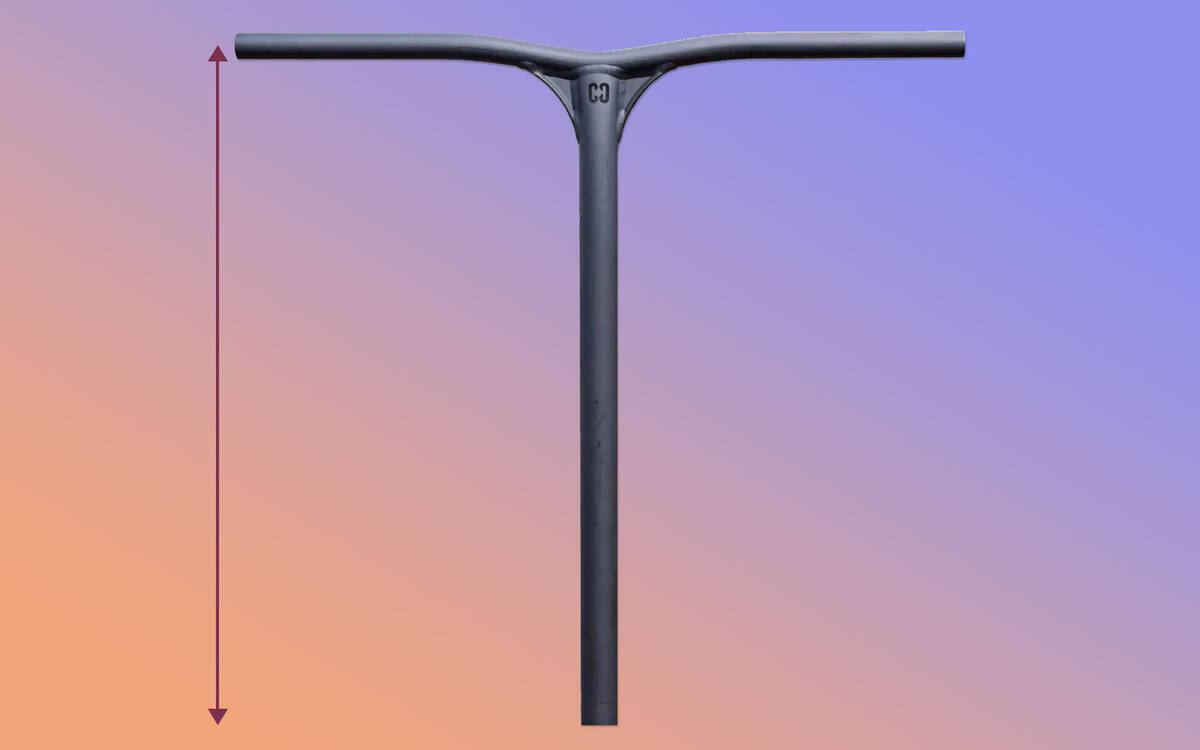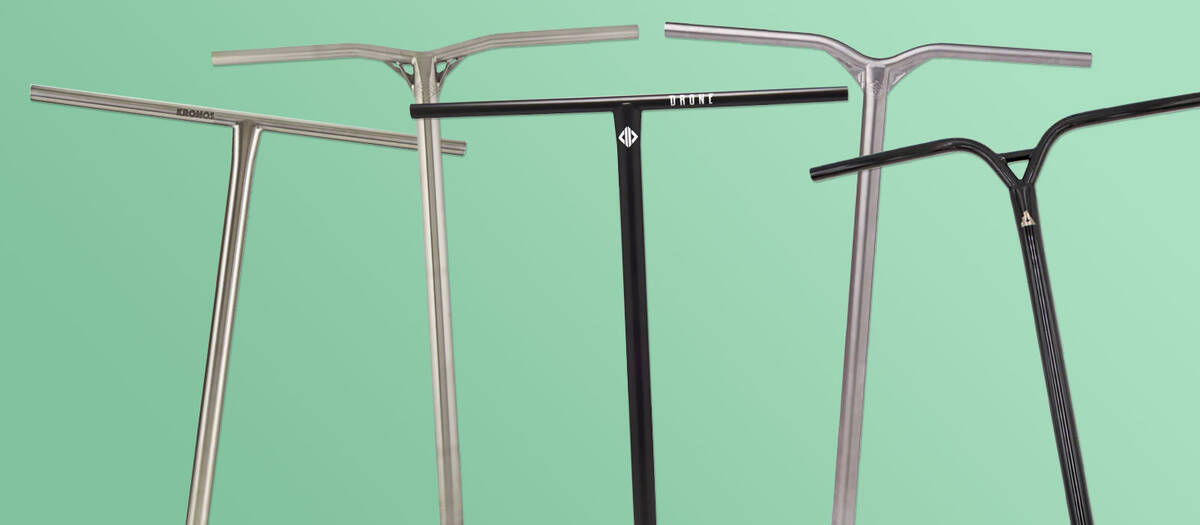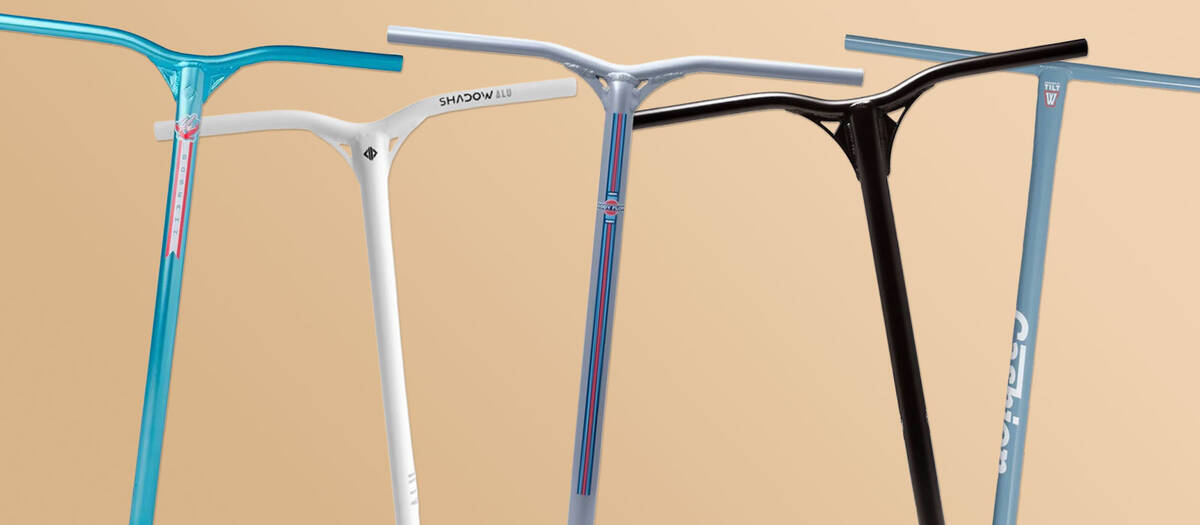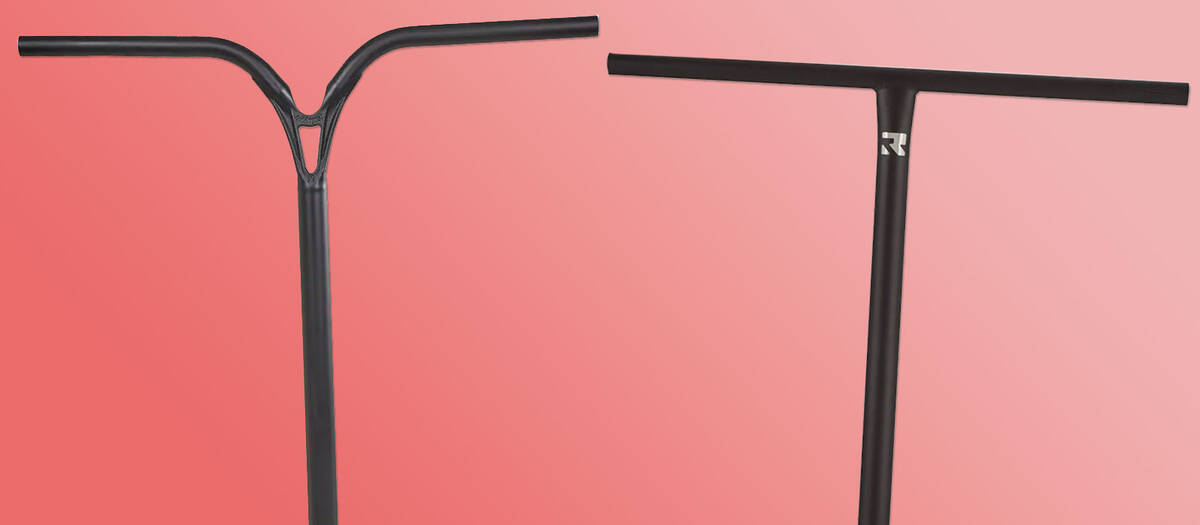Guide to Buying Pro Scooter Bars
We'll address common questions that may arise before you buy a new pro scooter bar. Discover essential factors such as bar height, material, and compatibility. Get set to enhance your scooter with the top-tier bar available!
Overview
Overview
Selecting the Perfect Scooter Bar Height

The height of pro scooter bars is a crucial factor in choosing the right bar. It significantly affects your riding comfort and style, so it's beneficial to give extra attention to bar height selection.
Ultimately, choosing bar height is about personal taste. For those new to scootering who haven't yet defined their preferences, certain standards can aid in determining the correct height.
Determining how tall your scooter bars should be involves finding a height that reaches your hips to navel while standing on the ground with the scooter deck between your feet. This height guarantees comfort and optimal leverage for tricks. With bars at this level, you'll maintain a straight back while having ample leverage. If you’re just starting and stuck between two height options that are within the suggested range, it's generally better to choose the taller bar for improved control.
Whether you plan to adjust your scooter bar size or are unsure about going taller or shorter, consider using this table as a guide.
| Aspect | Taller Bars | Shorter Bars |
|---|---|---|
| Comfort | Reduces back strain due to the upright posture | Rider must lean forward more, possibly leading to higher back strain |
| Tricks | Offers better control for manuals and grinds | Greater control during aerial maneuvers |
| Stability | Provides more stability | Enhances agility and responsiveness |
| Style | Generally suited for street riding | Typically fits park riding |
Measuring Scooter Bar Height
The height of your scooter bar is usually included in the product specs. However, this number alone doesn’t indicate exactly how tall your scooter will be with the bar installed.
To get an accurate total height for your scooter with the new bar, measure from the base of the front wheel to where the bottom of the scooter bar will sit when mounted. This position is usually contingent on the scooter's compression system.
Steps to measure the overall scooter height:
- SCS: Measure from the front wheel's bedrock to the middle zone of the clamp. Include this measurement with the bar height to compute total scooter bar height.
- HIC/IHC/ICS: Measure up from the bedrock of the front wheel to under the clamp. Include this distance with the bar height to understand your overall scooter height post installation.
If additional information is required, we’ve got your back with these valuable links:
Choosing the Perfect Scooter Bar Width

When selecting a scooter bar’s width, it’s ideal to match it to your shoulder's width. Measure your shoulders from end to end and add an inch or two. Achieving this measurement helps in determining a width that won't cause you discomfort. Bars that are too narrow might seem awkward and cause wrist or shoulder discomfort. Conversely, bars that are overly wide can limit your trick performance, with the added risk of uncomfortable wrist and shoulder spacing.
Factors to analyze when considering a scooter bar width adjustment:
- Wider bars: Offer more stability and are easier to grasp
- Narrower bars: Allow for increased agility and simpler spins
Scooter Bar Diameter: Oversized vs Standard

Scooter bar diameter comes in either standard or oversized sizing:
- Standard: 32 mm outer diameter / 28 mm inner diameter
- Mix: 35 mm outer diameter / 28 mm inner diameter (common in most aluminum bars)
- Oversized: 35 mm outer diameter / 32 mm inner diameter
The primary distinction lies in strength and weight, where oversized bars offer more sturdiness but weigh more, while standard bars are lighter but generally weaker.
Aluminum bars, often described as a wildcard, are manufactured with additional material in order to withstand harsh use. Thus, most aluminum bars feature a 35 mm outer diameter, juxtaposed with a standard 28 mm inner diameter.
Ensuring Scooter Bar Compatibility
Compatibility is key when choosing a new scooter bar, and verifying it against your current setup is essential. Reviewing the bar's specifications, including the compatible compression systems, will help ensure a proper fit.
- With an SCS arrangement, ensure that the bar lacks a slit, or remove it using an SCS adapter.
- If the clamp is standard size SCS, then standard outer diameter bars are a necessity.
- For oversized SCS clamps paired with standard bars, ensure you’re using the right SCS clamp shim.
|
Compression System |
Standard Bars 32 mm outer diameter 28 mm inner diameter |
Oversized Bars
35 mm outer diameter 32 mm inner diameter |
Aluminum Bars 35 mm outer diameter 28 mm inner diameter |
|---|---|---|---|
|
SCS Scooter Bars |
Compatible if:
|
Compatible if:
|
Compatible if:
|
|
HIC Scooter Bars |
NOT COMPATIBLE |
Compatible if:
|
NOT COMPATIBLE |
|
IHC Scooter Bars |
Compatible if:
|
NOT COMPATIBLE |
Compatible if:
|
When you're working with an SCS setup and are attracted to a bar with a slit at its end, you can acquire an SCS Sleeve (also referred to as an SCS Bar Adapter) from our Scooter Compression category, though many HIC or IHC bars provide an SCS adapter. Find them here:
We offer various guides pertinent to pro scooter compression and the fitment of different parts. Find the answers to your queries in these guides:
Titanium Bars for Scooters

Titanium bars, recognized for their combination of aluminum-like lightness and steel-like strength, have won favour with seasoned scooter riders. Their high strength-to-weight ratio makes them appealing, offering peace of mind against breakage during intense sessions while not hampering performance due to weight.
Despite costing more than chromoly or aluminum, due to the considerable resources necessary for their production and intrinsic properties, titanium bars are more expensive.
Riders new to titanium often discover a surprising element of bar flex. Initially, this may seem odd; however, with time and experience, this flex can become an advantage, softening impacts on harsh landings.
Unlike steel or aluminum, titanium bars don’t show gradual wear and bending; instead, they typically snap. Upon spotting any wear signs—which generally only appear after years of heavy usage—it is suggested to replace your bars immediately.
Pros:- High durability
- Very light
- Good flex
- High cost
- Flexibility (not all riders appreciate this)
- Can break suddenly when they fail.
Filter our options by material to find all our titanium bars:
Aluminum Bars for Scooters

Aluminum pro scooter bars, valued for their lightweight, cater to riders looking for enhanced agility and manoeuvrability. This low weight is especially beneficial for executing intricate aerial tricks. Moreover, aluminum bars often serve as an affordable option for those wanting trick-friendly bars without breaking the bank.
However, a key disadvantage of aluminum bars is their limited strength; they are more prone to bending or breaking relative to steel or titanium counterparts. To combat this issue, aluminum bars often incorporate gussets or wedges at critical points where the bars are welded, boosting their structural integrity.
Pros:- Lightweight
- Cost-effective
- Less durable overall
- Stiff / lacks flexibility
To explore our range of aluminum bars, use the filter option to sort by material:
Chromoly Bars for Scooters

Known for both exceptional durability and cost-effectiveness, steel pro scooter bars or chromoly bars tend to be heavier than bars crafted from alternative materials.
While aluminum bars often include gussets or Y-shapes for reinforcement, chromoly bars can be crafted into genuine T-shapes, thanks to the material's natural strength.
These steel bars are favoured in street configurations, even among professional riders. Not everyone focuses on having an ultra-lightweight setup, making chromoly pro scooter bars a solid contender, whether you're just starting out or are an expert!
To decrease weight, some chromoly bars feature butted tubing, which involves having thinner tubing in certain areas. This design maintains strength while reducing total weight. Suitable for beginners, chromoly bars are available to fit every compression system.
Pros:- Durable
- Strong
- Affordable
- T-shape
- Heavy
Check out our assortment of scooter bars and apply the filter to see all chromoly pro scooter bars:
Should You Choose Y-Bars or T-Bars for Your Pro Scooter?

The distinct shapes of T-bars and Y-bars provide them with their names, and choosing between the two depends on personal preferences rather than one being definitively better.
Due to the lack of gussets or reinforcements, T-bars, which connect directly from the handlebars to the down tube, are often considered less sturdy. For this reason, they're typically made from steel or titanium.
Y-bars, however, come with reinforcements that offer slightly enhanced strength, making them ideal for aluminum construction.
The choice between T-bars or Y-bars is shaped by factors such as aesthetics, personal feel and comfort during use, and alignment with a rider's style or identity. Both types offer distinct benefits and cater to various rider preferences.
Backsweep & Upsweep
Backsweep describes the handlebar's angle towards the rider, while upsweep is the upward angle. These features help improve scooter ergonomics, resulting in a more relaxed wrist positioning.
Backsweep and upsweep are commonly found in Y-shaped bars, whereas T-shaped pro scooter bars primarily focus on simplicity and straightforward design.
Explore the range of Y- and T-shaped bars we offer:
